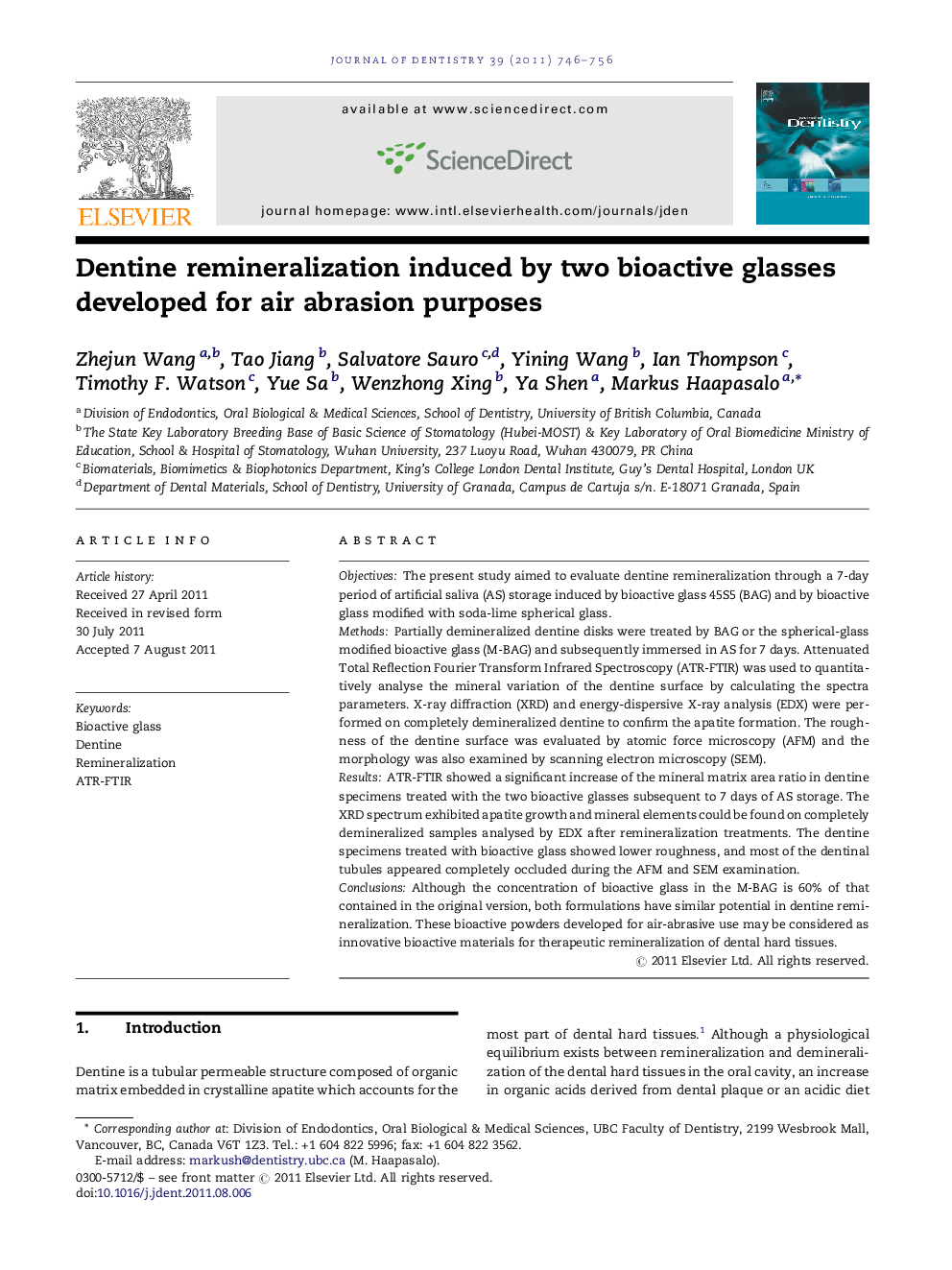| Article ID | Journal | Published Year | Pages | File Type |
|---|---|---|---|---|
| 6053549 | Journal of Dentistry | 2011 | 11 Pages |
ObjectivesThe present study aimed to evaluate dentine remineralization through a 7-day period of artificial saliva (AS) storage induced by bioactive glass 45S5 (BAG) and by bioactive glass modified with soda-lime spherical glass.MethodsPartially demineralized dentine disks were treated by BAG or the spherical-glass modified bioactive glass (M-BAG) and subsequently immersed in AS for 7 days. Attenuated Total Reflection Fourier Transform Infrared Spectroscopy (ATR-FTIR) was used to quantitatively analyse the mineral variation of the dentine surface by calculating the spectra parameters. X-ray diffraction (XRD) and energy-dispersive X-ray analysis (EDX) were performed on completely demineralized dentine to confirm the apatite formation. The roughness of the dentine surface was evaluated by atomic force microscopy (AFM) and the morphology was also examined by scanning electron microscopy (SEM).ResultsATR-FTIR showed a significant increase of the mineral matrix area ratio in dentine specimens treated with the two bioactive glasses subsequent to 7 days of AS storage. The XRD spectrum exhibited apatite growth and mineral elements could be found on completely demineralized samples analysed by EDX after remineralization treatments. The dentine specimens treated with bioactive glass showed lower roughness, and most of the dentinal tubules appeared completely occluded during the AFM and SEM examination.ConclusionsAlthough the concentration of bioactive glass in the M-BAG is 60% of that contained in the original version, both formulations have similar potential in dentine remineralization. These bioactive powders developed for air-abrasive use may be considered as innovative bioactive materials for therapeutic remineralization of dental hard tissues.
